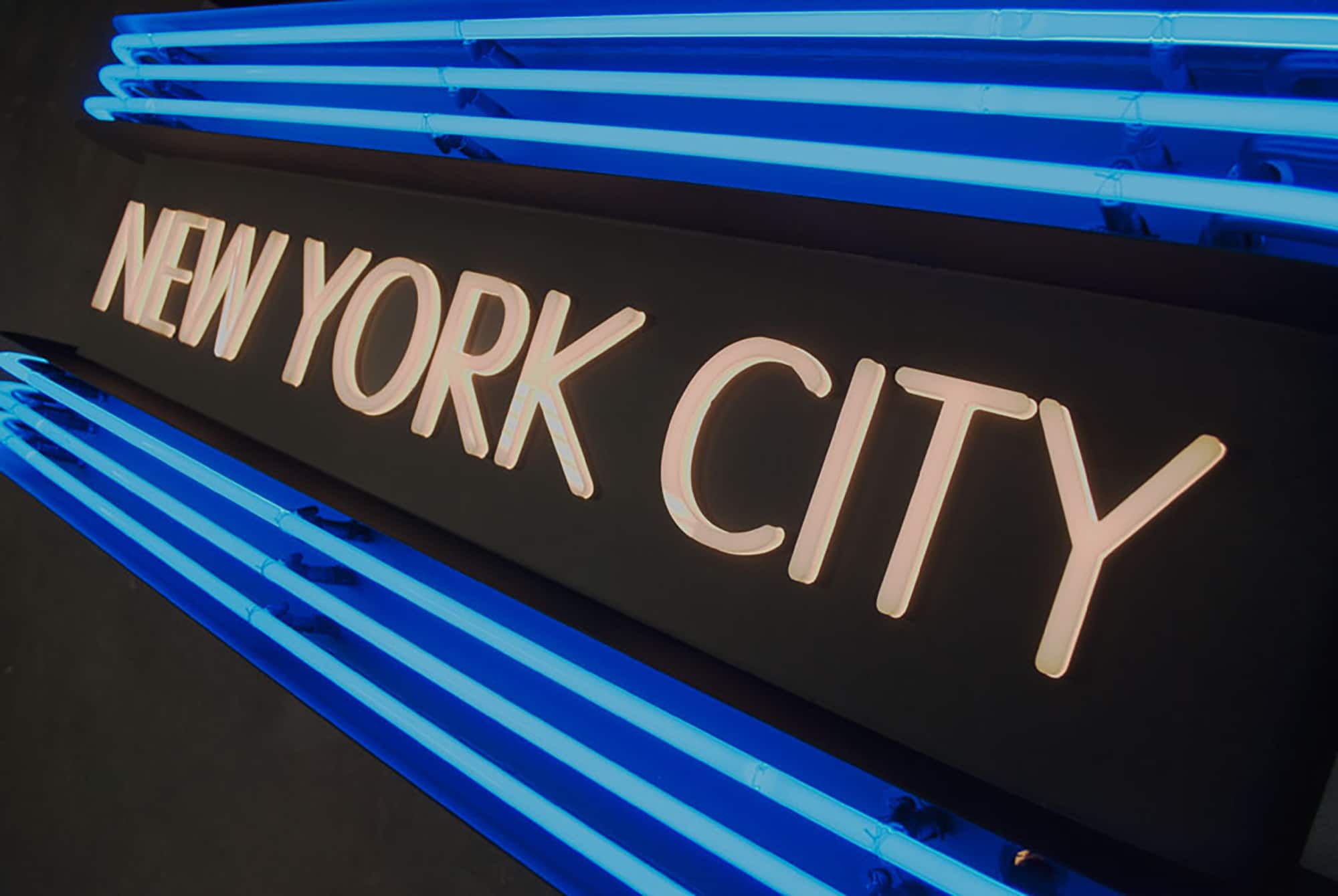IF YOU’VE CHOSEN a side, it’s time to shift your ground. I’m talking about the unofficial battle between neon and LEDs. Which is better? Neither? Both? Ah! The key is to find the lighting purpose and design accordingly.
In fact, I am simultaneously tightening wire nuts and placing electrode caps on a replica (can we call it that?) of the iconic Radio City Music Hall’s marquee sign. That’s right! I have redesigned a much smaller version of this sign for Joe Bonamassa’s personal “Nerdville” collection.
Although my version doesn’t have six miles worth of neon or 599 transformers, I maintained as much of the original visual aesthetic as possible by displaying exposed red neon letters housed in open-face channel letters and beautiful blue neon bars that run evenly across the sign.
Part of the original Radio City Music Hall’s sign design has some illuminated changeable copy. It was in this area that I saw a perfect opportunity to use LED modules for my piece. I chose 3500K warm white LED modules to obtain more of a vintage-theatre look. I believe LED modules are a great and efficient method of lighting, providing me with so much control and nearly limitless options.
But as a designer, efficiency isn’t the only thing I’m trying to achieve. I aim for function to have a harmonious relationship with a visually tasteful end product. In his book Mastering Layout: On the Art of Eye Appeal, author Mike Stevens states, “… it is the combination of parts, and how they relate as a whole, that determines the effectiveness and quality of a sign.”

Advertisement
The ultimate purpose of my sign was to create a specific rock and roll/blues-type of environment. Much like rock and blues, I find that neon has soul and it influences moods. Neon is a fun and attractive lighting element; it should continue to be implemented in the sign industry as often as possible despite its complexity. Neon hits us with nostalgia and carries the unique essence that has made many places historic, iconic and memorable. Have you ever paid close attention to neon colors and how vibrant they actually are? How the light travels through the glass tubes unapologetically? It’s as if neon were saying, “I’m here and I’ve got something to say.” This is something that LEDs will not be able to replace or recreate, no matter how advanced technology gets.
On the other hand, LEDs have taken over our daily lives. Signs, phones, home devices, street lights, cars, etc. — reflections of the versatility and efficiency of LEDs. The perfect example of less is more. Less voltage, more lighting coverage. Less maintenance, more energy savings.
So how do I implement LEDs in my sign designs? I think carefully about what I’m trying to achieve. If any of the sign’s concept includes night visibility, dimming, or changing hue, I immediately resort to LEDs. Sometimes, my rule of thumb is if my design doesn’t have any exposed neon elements, all other lighting elements are automatically LEDs. It’s not to say one is better than the other. I believe they are too different to even to be compared. Neon and LEDs have different qualities and abilities, and somewhere in between the sign artist and the salesperson, that became misunderstood. The goal shouldn’t be for one to replace the other; the key is to find their purpose and design accordingly. With this piece, both coexist successfully.



 Tip Sheet1 week ago
Tip Sheet1 week ago
 Photo Gallery2 days ago
Photo Gallery2 days ago
 Ask Signs of the Times4 days ago
Ask Signs of the Times4 days ago
 Real Deal1 week ago
Real Deal1 week ago
 Benchmarks6 days ago
Benchmarks6 days ago
 Editor's Note2 weeks ago
Editor's Note2 weeks ago
 Women in Signs1 week ago
Women in Signs1 week ago
 Photo Gallery1 week ago
Photo Gallery1 week ago














